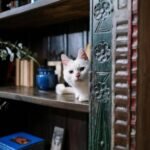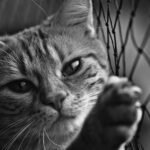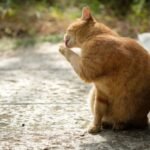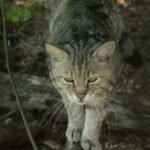A groundbreaking conservation effort is underway as a lynx born in captivity at Newquay Zoo in Cornwall takes her first tentative steps toward a wild future. This remarkable feline pioneer could become the first UK zoo-born cat successfully released into the wild. The young female lynx recently arrived in Germany’s Black Forest region after an unusual request from European conservation experts facing a shortage of female lynxes in their breeding program.
From Cornwall to the Black Forest
Image by pexels
The female lynx began her journey with a carefully planned transport operation from Newquay Zoo. BBC environment correspondent Jonah Fisher witnessed her departure as she was loaded onto a specialized truck bound for southwestern Germany. After traveling across Europe, she arrived at her temporary home – a 1,200-square-meter enclosure where she’ll undergo extensive evaluation.
John Meek, representing Newquay Zoo, was present for the emotional moment when the lynx first explored her new surroundings. “I’m a big boy but I had a few tears in my eyes,” he shared. The experience reinforced his belief in modern zoo missions: “Nowadays, zoos are not here to keep animals in cages. They’re there for conservation. And this is it, conservation in action.”
The lynx appeared cautious but curious during her release, sniffing the air and carefully assessing her surroundings before venturing out – behaviors that give conservationists hope about her adaptive potential.
Addressing Europe’s Lynx Population Challenges
While thousands of lynx already inhabit European forests, conservation efforts focus on introducing new individuals to enhance genetic diversity. The fragmentation of natural habitats through human development has created isolation barriers for wildlife, leading to concerning inbreeding issues among lynx populations.
Dina Gebhardt from Bern Animal Park, who coordinates the European Endangered Species Programme (EEP) for lynx, explains her role with good humor: “Basically I’m Tinder for the zoo-born lynx.” It was Gebhardt who initiated the unusual request for the Newquay-born female after facing a significant challenge last year – too many male lynx births and not enough females for balanced rewilding efforts.
“Our nature is very fragmented, due to railways and streets and cities. And this means we created a lot of barriers for the lynx, which leads to inbreeding,” Gebhardt explains. This genetic bottleneck makes the introduction of new females particularly valuable to conservation goals.
Breaking New Conservation Ground
Image by pexels
The Newquay lynx represents an exceptional case in rewilding efforts. Typically, lynx selected for release programs have been raised from birth with minimal human contact, specifically prepared for a wild future. This Cornwall-born cat had a more traditional zoo upbringing, making her potential success even more significant for future conservation strategies.
Though not officially categorized as “big cats,” Eurasian lynx can weigh up to 30 kilograms and hunt deer for sustenance. Their hunting capabilities could prove particularly relevant in places like the UK, where deer populations have reached record levels, prompting discussions about potential lynx reintroduction centuries after their extinction there.
Future Implications
The coming months will determine whether this pioneering feline can develop or demonstrate the necessary skills for wild survival. Her success could open new possibilities for zoo-born animals to contribute meaningfully to wild populations and biodiversity.
For John Meek and the Newquay Zoo team, their immediate response to Gebhardt’s request reflects a fundamental shift in zoo philosophy: “Of course we said yes straight away, that’s something that we’d love to do.” This enthusiasm highlights how modern zoological institutions increasingly measure success not by visitor numbers, but by meaningful contributions to wildlife conservation and species survival.






